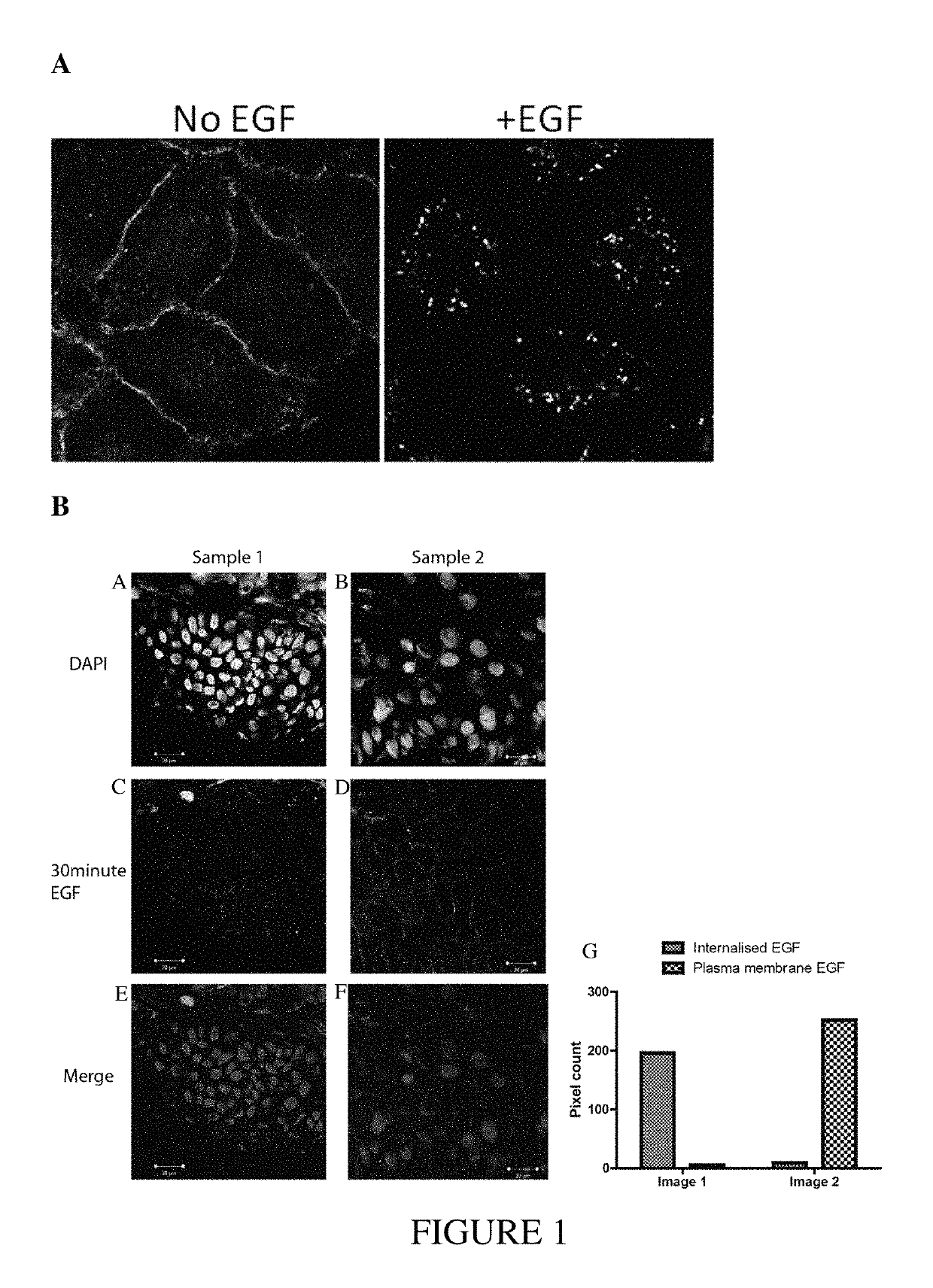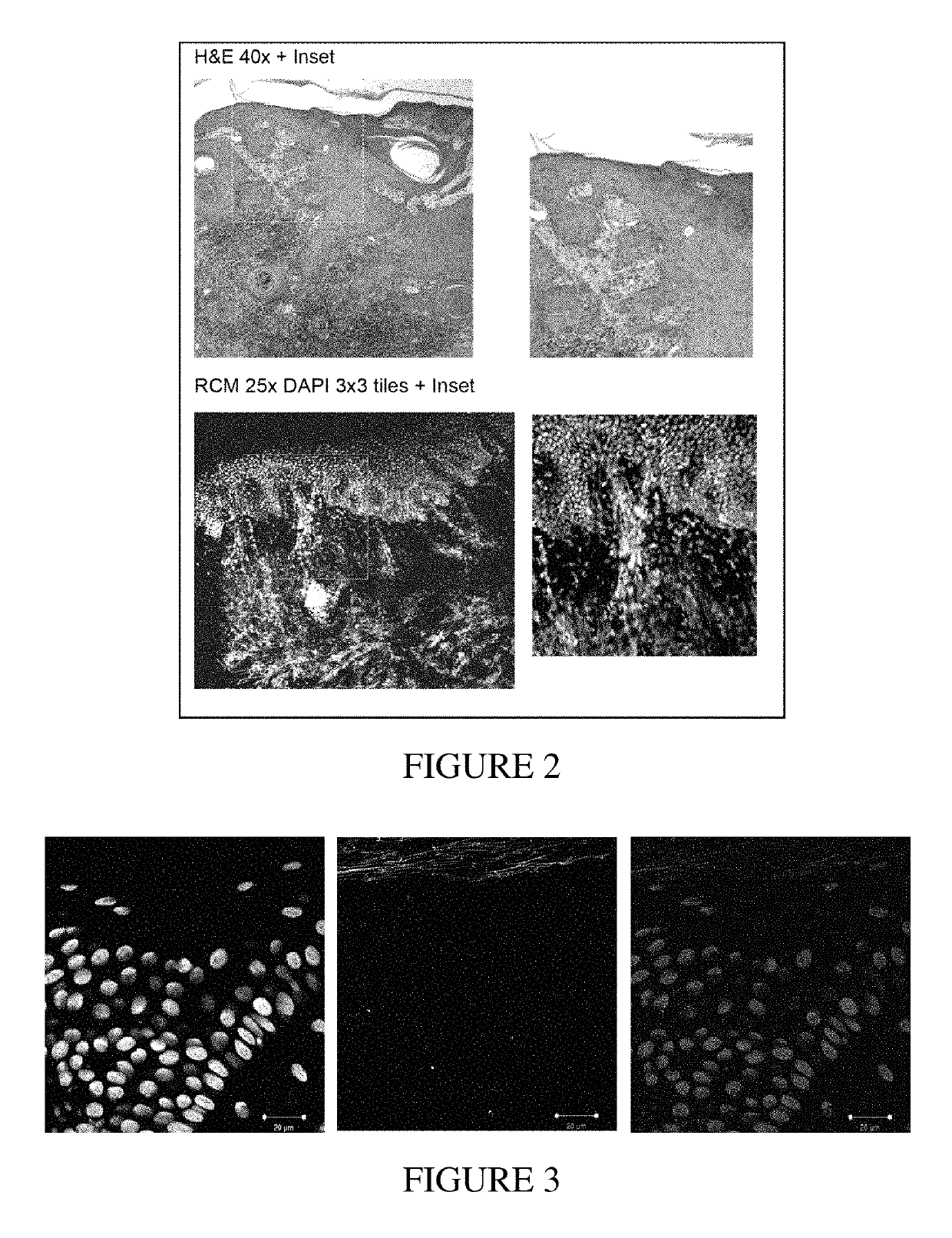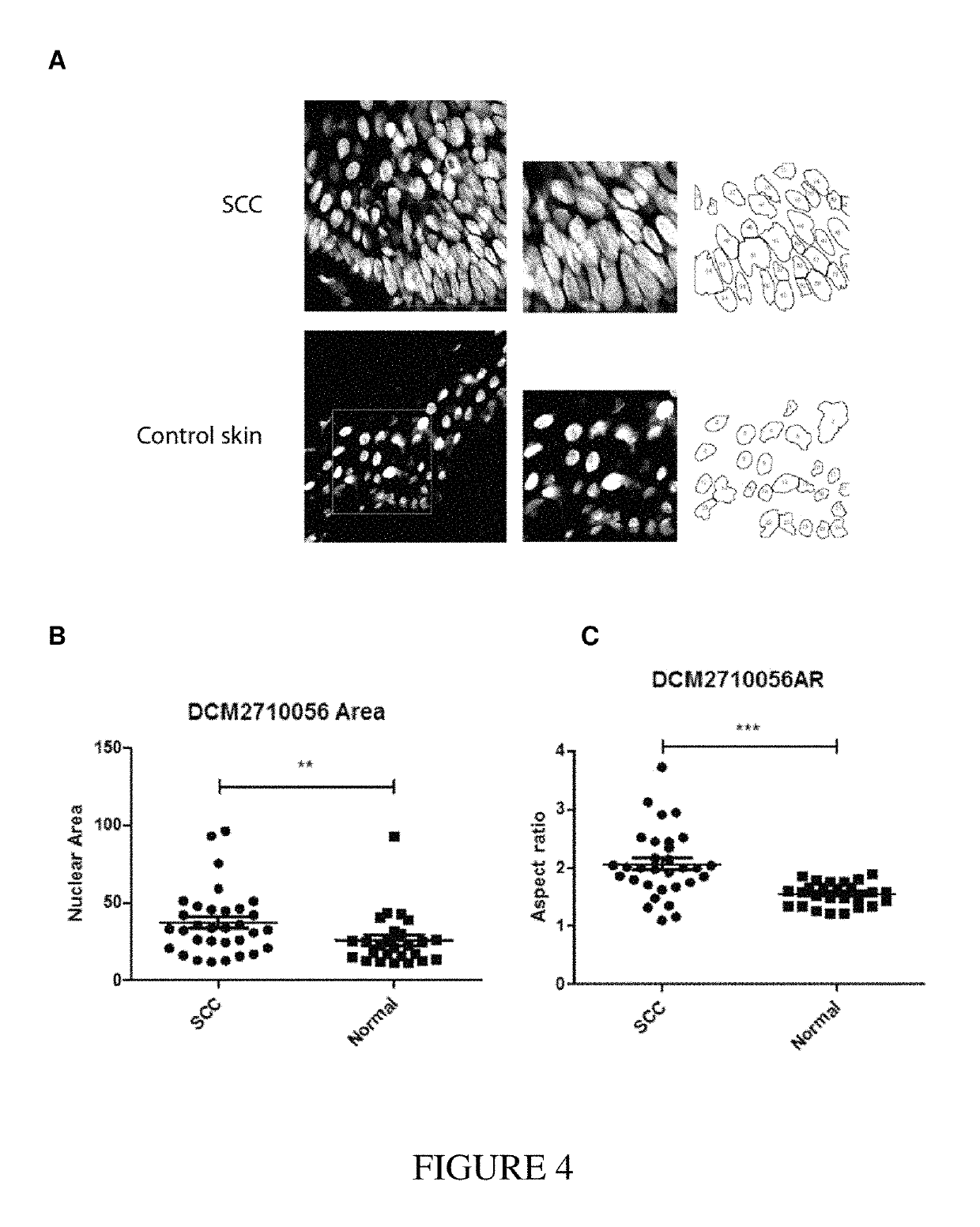Use of endocytosis inhibitors and antibodies for cancer therapy
a cancer therapy and endocytosis technology, applied in the direction of immunodeficiency disorders, drug compositions, peptides, etc., can solve the problems of significant proportion of treated patients not responding for reasons, obstacles to successful advances in patient outcomes, and unabated disease burden attributable to such illnesses, so as to improve the efficacy of the agent, and enhance the antibody-dependent cellular cytotoxicity response
- Summary
- Abstract
- Description
- Claims
- Application Information
AI Technical Summary
Benefits of technology
Problems solved by technology
Method used
Image
Examples
example 1
Disregulation of EGFR in Keratinocyte Tumors
Materials and Methods
[0184]Materials
[0185]Cell lines include seven lines from HNSCC including examples derived from the tongue, pharynx and hypopharynx; SCC-9, SCC-15, SCC-25, Detroit-562, Cal 27, FaDu, and Colo-16. In addition a further two lines have been used, KJD, derived from transformed human epidermal keratinocytes and A-431, derived from a vulval SCC and known to overexpress EGFR. Cell line identities were verified by SNP analysis. Cells were mycoplasma free and tested regularly. Cells were grown in Ham's F-12 media: DMEM supplemented with 10% FBS, 10 mM HEPES, 2 mM L-Glutamine, 1 mM Sodium pyruvate (Gibco, Invitrogen). For basal conditions cells were grown for 3 hrs in complete media but without 10% FBS. Other reagents included Alexa488-labelled EGF (Invitrogen), EGFR (clone 3107; Invitrogen) Alexa-594 goat anti-mouse IgG (A11005; Invitrogen), HRP-conjugated goat anti-mouse IgG (A10547; Invitrogen), Mouse anti-flotillin-1 IgG (610...
example 2
EGRF Endocytosis is Disregulated in Human Squamous Cell Carcinoma
Material and Methods
[0222]Cell Lines
[0223]Cell line identities were verified by SNP analysis. Cells were mycoplasma free and tested regularly. Cells were grown in Ham's F-12 media: DMEM supplemented with 10% FBS, 10 mM HEPES, 2 mM L-Glutamine, 1 mM Sodium pyruvate (Gibco, Invitrogen). Normal Human Embryonic Keratinocytes (HEKs) from neonatal foreskins were cultured as described in (11). HEK cultures were grown and maintained in low-calcium serum-free KC culture medium (Gibco, Invitrogen) supplemented with 2.5 μg EGF and 25 mg BPE. For basal conditions cells were grown for 3 hrs in complete media but without 10% FBS.
[0224]Antibodies
[0225]Primary Ab: AKT (C67E6; Cell Signaling Technology), Clathrin (BF-06; EXBIO) EGFR (528; Cell Signaling Technology), EGFR (31G7; Invitrogen), ERK2 (c-14; Santa Cruz), phospho-EGFR (Tyr1068, D7A5; Cell Signaling Technology), phospho-AKT (Ser473, D9E; Cell Signaling Technology), phospho-44 / ...
example 3
Manipulation of EGFR Trafficking for Improving Anti-EGFR Monoclonal Antibody Therapies
Materials & Methods
[0260]Cetuximab Mediated Growth-Inhibition MTS Assay
[0261]The Cetuximab mediated growth-inhibitory effect was measured by the CellTiter96 Aqueous One Solution Cell Proliferation Assay (Promega). A431 cells (number=1000, 2500 and 5000 per well) were seeded in 96-well flat bottom plates and incubated overnight to allow adherence. The cells were then exposed to cetuximab at various concentrations ranging from 0 to 100 μg / mL for 48 hours. 20 μL MTS reagent was added into each well and incubated at 37° C. in 5% CO2 for 2 hours. The optical density (OD value) was read at 490 nm by a microplate spectrophotometer. The percentage cell growth was indicated by comparison of OD value of treated cells versus untreated controls.
[0262]Cetuximab Mediated ADCC MTS Assay
[0263]The Cetuximab mediated ADCC effect was measured by the CellTiter96 Aqueous One Solution Cell Proliferation Assay (Promega)....
PUM
| Property | Measurement | Unit |
|---|---|---|
| concentration | aaaaa | aaaaa |
| concentrations | aaaaa | aaaaa |
| concentrations | aaaaa | aaaaa |
Abstract
Description
Claims
Application Information
 Login to View More
Login to View More - R&D
- Intellectual Property
- Life Sciences
- Materials
- Tech Scout
- Unparalleled Data Quality
- Higher Quality Content
- 60% Fewer Hallucinations
Browse by: Latest US Patents, China's latest patents, Technical Efficacy Thesaurus, Application Domain, Technology Topic, Popular Technical Reports.
© 2025 PatSnap. All rights reserved.Legal|Privacy policy|Modern Slavery Act Transparency Statement|Sitemap|About US| Contact US: help@patsnap.com



